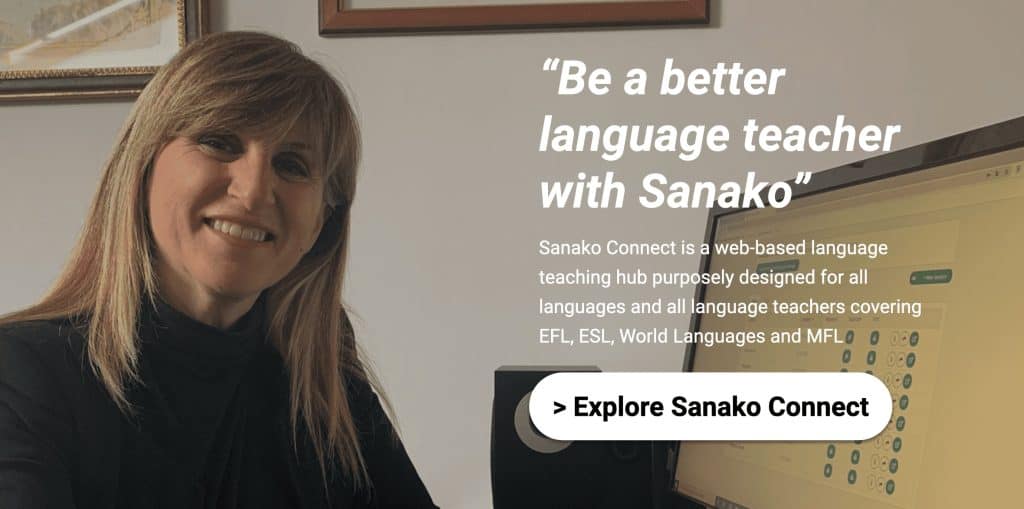If you are a language teacher whose New Year’s resolution for 2022 was to find new inspiring resources to innovate your lessons, you have come to the right place! Check out Sanako’s reading list to find five top recommended language teaching books for language teachers worldwide.
How to develop your language teaching skills? Time to grab a book!
Remember all the times you urged your students to read because reading would help them improve their language skills?
Well, it’s time to follow your own advice, dear teachers! Discovering new resources is necessary not only to keep abreast of developments in pedagogy, linguistics, and didactics but also to find original ideas and stimuli that can breathe new life into your teaching routine.
In the list below, you will find five book recommendations that we at Sanako think could be an amazing source of inspiration to enrich your language lessons in 2022.
#1 How Languages are Learned, Patsy Lightbown and Nina Spada, Oxford University Press
Let us start with a seminal reading, so to say, in case you want to refresh your language acquisition knowledge.
The assumption from which the two authors start is that the reader is not necessarily an expert in the field of language learning processes. In order to help the reader navigate through the nitty-gritty of the language acquisition theories, the text includes the analysis of several case studies taken from real language classes.
If you are interested in purchasing, we recommend buying the updated fourth edition, which comes with new sections that are very useful in guiding teachers to link the theory laid out in the book and their daily language teaching practice.
Why read it: Do you get bored by theory without practice? Then, this is the book for you. The text combines a comprehensive explanation of the process of language learning and development with the analysis of language classes, case studies and practical proposals.
Key quote: “Both first and second language acquisition are best described as developing systems with their own evolving rules and patterns, not simply as imperfect versions of the target language.”
#2 Learning Teaching. The essential guide to English Language Teaching, Jim Scrivener, MacMillan Elt
None ever stops learning. Not even language teachers. However, reading Scrivener’s book will help you get through the process of feeling like a student again.
The book turns out to be exactly what it promises to be: an essential guide for English language teachers. There is no aspect of the language teacher’s life within the classroom that Scrivener does not address. How do you plan an activity? Checked. How to deal with the first-lesson panic? Checked.
Through pragmatic and never over-the-top argumentation, Scrivener will guide you through the best classroom practices, providing valuable insights on how each teacher, in their individuality, can aspire to achieve quality language teaching.
Why read it: Don’t expect a traditional guide with a “do-this, don’t do-that” approach. This book is for those who want to think about teaching, how it changes and adapts according to circumstances, and the personal qualities a teacher must develop to aspire to success.
Key quote: “The act of teaching is essentially a constant processing of options … in order to become a better teacher, it seems important to be aware of as many options as possible. This may enable you to generate your own rules and guidelines as to what works and what doesn’t.”
#3 The Natural Approach. Language acquisition in the classroom, Stephen Krashen & Tracy D. Terrel, Janus Book Pub/Alemany Pr
Not all language teachers agree with the theory set forth in this text, but undoubtedly we are talking about a classic in language teaching literature.
This is the book that introduced the theory of language acquisition through Comprehensible Input (CI) and which Krashen, certainly not lacking in modesty, called superior to other hypotheses previously developed.
If you want to read more on Krashen and Terrel’s theory and why some agree with them and others don’t, check out our another blog post on the topic.
Why read it: Developed in the late 20th century, the Natural Approach is still discussed by language learning experts today. If you want to take part in the debate, you have to read this book.
Key quote: “Language is best taught when it is being used to transmit messages, not when it is explicitly taught for conscious learning.”
#4 CLIL: Content and Language Integrated Learning, Do Coyle, Philip Hood, David Marsh, Cambridge University Press
Developed in the 1990s, the Content and Language Integrated Learning approach has been one of the most interesting “new kids in the block” in the field of language teaching theories.
CLIL is a method that, when used correctly, proves to be a lot of fun for both teacher and students. In short, this approach involves using targeted language to teach a non-linguistic subject (geography, history, but also cooking, photography, science, robotics, etc.).
That sounds like a lot of fun and very easy. But, for you to really apply the CLIL method, having a hobby and talking about it in the targeted language, is not enough.
Coyle, Hood, and Marsh’s book will help you understand how to master the CLIL method and apply it effectively in the language classroom.
Why read it: If you’ve always been curious about CLIL but aren’t sure where to start, here’s a great resource for understanding the basics and techniques of this exciting teaching approach.
Key quote: “The complexities of CLIL, and particularly the importance of the context in which it is situated, demand the understanding of the why and how.”
#5 Curriculum Development in Language Teaching, Jack C. Richards, Cambridge University Press
Planning is a key component of the teacher’s job. Each activity should be contextualized and embedded within a coherent pathway that should culminate in achieving educational goals.
Throughout its nine chapters, Richard’s book will lead you through all the critical moments in the curriculum development process: from conducting situational analysis to defining learning outcomes to syllabus design.
Why read it: Recommended for all language teachers (in particular to those who rely more on the inspiration of the moment than on planning) as well as all those school officers involved in planning teaching activities.
Key quote: “Curriculum development is an essentially practical activity since it seeks to improve the quality of language teaching through the use of procedures that can be used in the planning, design, development and implementation of curriculum activities.”
Sanako is the global-leader in teacher-led language instruction technology. Our software supports language teachers to deliver inspiring and effective lessons. If you’d like to find out more about how Sanako’s dedicated language teaching software could transform your approach to language teaching, click here or the banner below to learn more!

